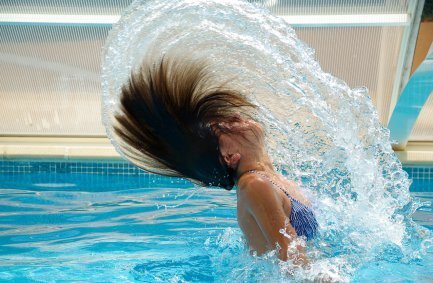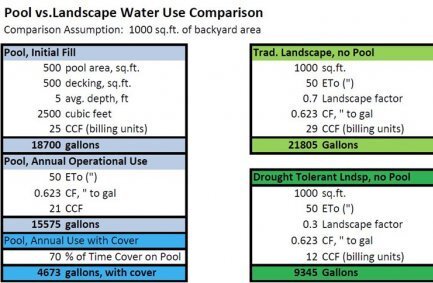Pools in the Time of Drought
Should the iconic, sparkly blue Southern California swimming pool be sacrificed in the name of water conservation? The golden state is living up to its name these days – definitely not so green. Some water districts may prohibit new pools from being filled and have limits on how much water existing pools can use.
An average pool holds 15,000 gallons of water; so it is the initial filling that can make a pool owner feel like a water hog. The only solace here is that the water has not gone down the storm drains, it is not being wasted, but filtered, recycled, and it is available for emergency use. And of course ready for you to float around in on your pool noodle.
Once filled however, pools and their surrounding hardscapes use about the same amount of water as a lawn of the same size, and much less if the proper steps are taken:
Evaporation is the main reason pool owners are forced to add water to their pool, and can be cut by as much as 50% by investing in a solar blanket or cover made of UV- stabilized polyethylene, polypropylene, or vinyl. Solar or bubble covers conserve water, but also cut energy use by enhancing the solar warming of the water.
Be sure to drain any water which has settled on your pool cover. This prevents water loss due to evaporation, and also prevents mosquitos from setting up a nursery on the stagnant water.
As the weather cools be mindful of the weather report and remove your pool cover right before showers to add rainwater.
Keep the heat 80 degrees or below – be brave, you can do it. The heat encourages evaporation.
Nix the splash fights kids; keep the water in the pool.
So while pool guilt is real and justifiable, there are ways to conserve as much as you can, while we all do a dance for El Niño this winter.


